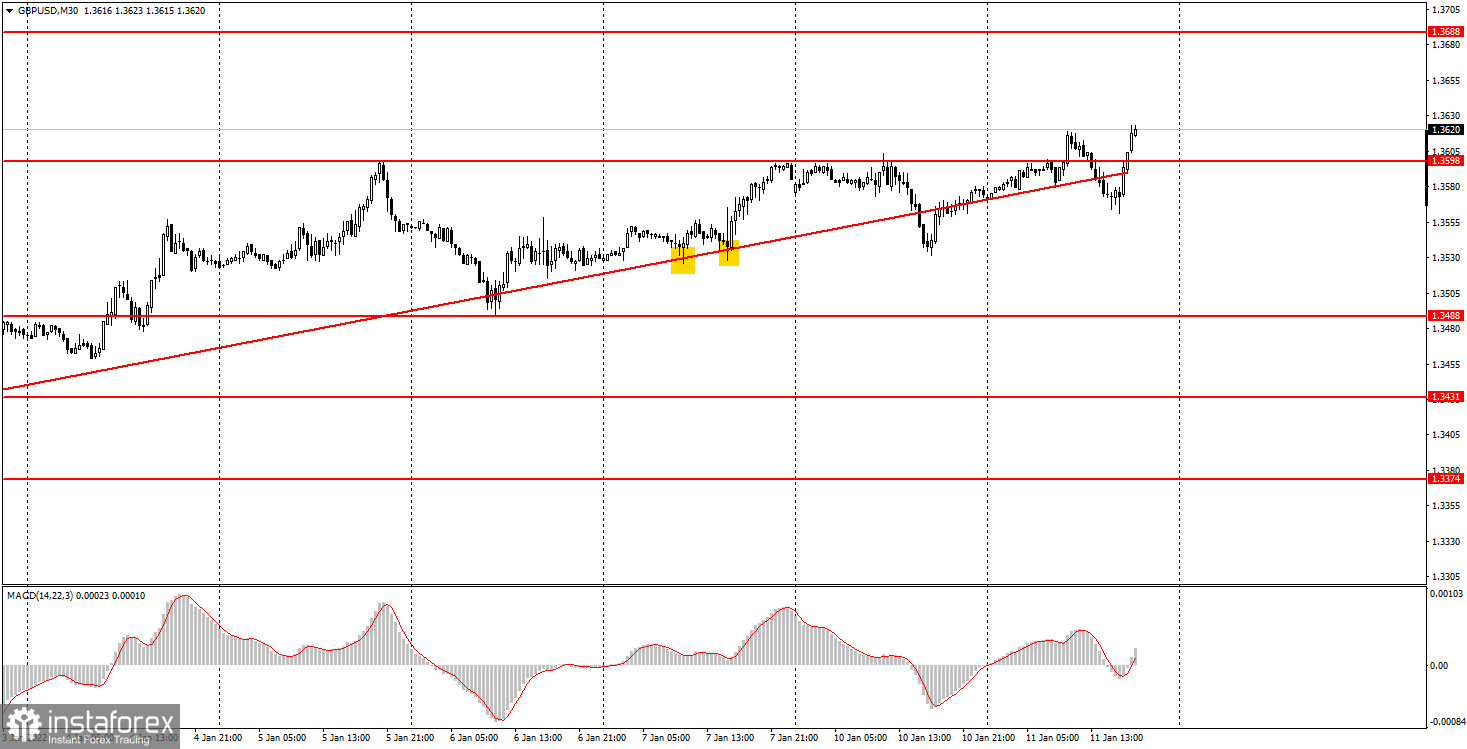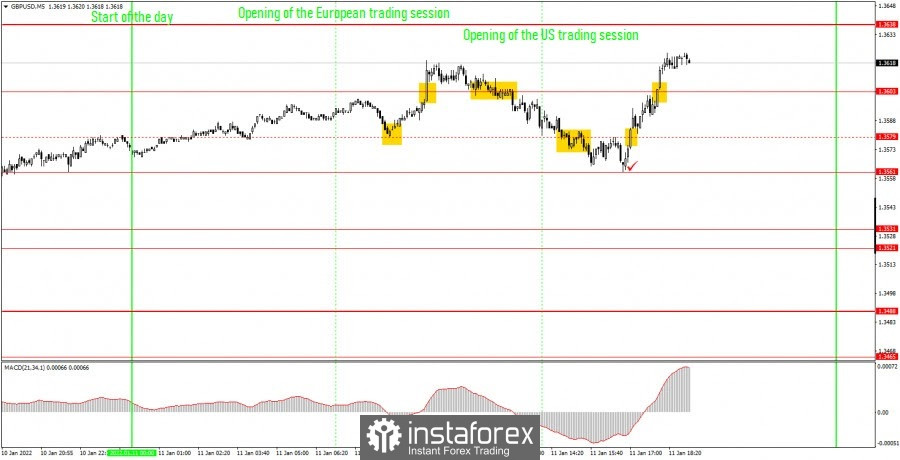Analysis of previous deals:
30M chart of the GBP/USD pair

The GBP/USD pair, in spite of everything, continued its upward movement on Wednesday. Not a day earlier, not today, formally, it had no reason to grow. After all, the growth of the pair means the growth of the British pound and the fall of the US dollar. Federal Reserve Chairman Jerome Powell spoke yesterday in the Senate and was hawkish. And any hawkish information (aimed at tightening monetary policy) is a reason for the growth of the national currency, that is, the US dollar. However, yesterday the dollar was falling and the pound was rising. Today it became known that inflation in America continues to grow, which is also a bullish factor for the dollar, as it increases the likelihood of tightening the Federal Reserve's monetary policy. But today, too, the dollar was falling, and the pound was rising. Of course, we can conclude that the market simply does not accept any news related to the tightening of monetary policy, since there have already been a huge number of them in recent months. But still, the last two days, after the pair crossed the trend line twice, the pound still continues to grow.
5M chart of the GBP/USD pair

The movement of the pound/dollar pair on the 5-minute timeframe was quite interesting on Wednesday, but not devoid of false trading signals. The first two sell signals were formed in the morning, when the price first crossed the 1.3638 level and then bounced off it from below. At this point, novice traders could open short positions. However, the downward movement could not continue for a long time, and the price failed to go down by 15 points, so Stop Loss could not be set to breakeven. After that, the pair returned to the level of 1.3638 at the beginning of the US session, and then surpassed it, forming a buy signal. Strictly speaking, there was no need to open a long position at that moment, since the signal was formed literally half an hour before the release of the inflation report. But since there was already a buy signal, it was possible to take a risk and open a long position with Stop Loss below 1.3638 in case the traders' reaction was positive for the dollar. But in the end, the upward movement continued and those newcomers who opened a deal here could earn from 40 to 60 points, since the movement ended only around the level of 1.3708. A loss of 16 points was received on the first trade.
How to trade on Thursday:
In the 30-minute TF, the upward trend continues simply because the price continues to go up. Thus, although the upward trend line is no longer relevant, long positions remain preferable. It is recommended to trade at the levels of 1.3638, 1.3688, 1.3708, 1.3740 at the 5-minute TF tomorrow. The price can bounce off these levels, or it can overcome them. As before, we set Take Profit at a distance of 40-50 points. At the 5M TF, you can use all the nearest levels as targets, but then you need to take profit, taking into account the strength of the movement. When passing 20 points in the right direction, we recommend setting Stop Loss to breakeven. No important report from the UK tomorrow, and only secondary data will be released in the US, which is unlikely to seriously interest market participants.
Basic rules of the trading system:
1) The signal strength is calculated by the time it took to form the signal (bounce or overcome the level). The less time it took, the stronger the signal.
2) If two or more deals were opened near a certain level based on false signals (which did not trigger Take Profit or the nearest target level), then all subsequent signals from this level should be ignored.
3) In a flat, any pair can form a lot of false signals or not form them at all. But in any case, at the first signs of a flat, it is better to stop trading.
4) Trade deals are opened in the time period between the beginning of the European session and until the middle of the US one, when all deals must be closed manually.
5) On the 30-minute TF, using signals from the MACD indicator, you can trade only if there is good volatility and a trend, which is confirmed by a trend line or a trend channel.
6) If two levels are located too close to each other (from 5 to 15 points), then they should be considered as an area of support or resistance.
On the chart:
Support and Resistance Levels are the Levels that serve as targets when buying or selling the pair. You can place Take Profit near these levels.
Red lines are the channels or trend lines that display the current trend and show in which direction it is better to trade now.
The MACD indicator (14,22,3) consists of a histogram and a signal line. When they cross, this is a signal to enter the market. It is recommended to use this indicator in combination with trend lines (channels and trend lines).
Important speeches and reports (always contained in the news calendar) can greatly influence the movement of a currency pair. Therefore, during their exit, it is recommended to trade as carefully as possible or exit the market in order to avoid a sharp price reversal against the previous movement.
Beginners on Forex should remember that not every single trade has to be profitable. The development of a clear strategy and money management are the key to success in trading over a long period of time.





















